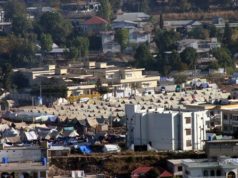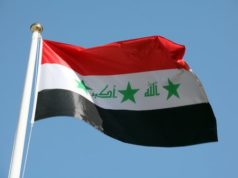
The Issue of Bhutanese Refugees: A Crisis of Human Rights and International Response
Introduction
For decades, the small Himalayan kingdom of Bhutan has attracted visitors and tourists from all over the world who come to admire its majestic peaks and pristine environment. Yet, behind this idyllic image lies a darker reality: the tragic plight of thousands of Bhutanese refugees. These individuals, who have been forced to flee their homes due to ethnic and political persecution, have been living in refugee camps in Nepal for more than two decades. Despite efforts by international organizations and governments to address the issue, the situation of Bhutanese refugees remains unresolved, and they continue to suffer from poverty, malnutrition, and lack of access to basic services.
Background
The Bhutanese refugee crisis began in the late 1980s when the Bhutanese government began a campaign to suppress any dissent or opposition to its rule. This campaign was focused primarily on the Lhotshampas, an ethnic group living in southern Bhutan who have close cultural, linguistic, and religious ties to Nepal. The government accused the Lhotshampas of being illegal immigrants and subjected them to a range of discriminatory policies, including revocation of citizenship, forced eviction, and denial of access to education and healthcare.
As a result, thousands of Lhotshampas fled across the border into Nepal, where they lived in refugee camps, often in extremely difficult conditions. The majority of refugees lived in seven camps located in eastern Nepal close to the border with Bhutan. These camps were officially recognized by the Nepalese government and were managed by the United Nations High Commissioner for Refugees (UNHCR). The refugees were provided with basic services, including shelter, food, and healthcare, but their lives were defined by uncertainty and poverty.
The Bhutanese government has consistently denied any responsibility for the refugee crisis, claiming that the Lhotshampas are not Bhutanese but rather illegal immigrants who must be repatriated to Nepal. This position has been repeatedly challenged by international human rights organizations, which have documented extensive evidence of ethnic cleansing and forced displacement in Bhutan.
International Response
The international community has been involved in efforts to resolve the Bhutanese refugee crisis for over two decades. The UNHCR has provided basic services to the refugees in Nepal and has attempted to facilitate dialogue between Bhutan and Nepal to find a solution to the crisis. In 2008, Bhutan agreed to take back some of the refugees, but this process has been slow and fraught with difficulties.
In addition to the UNHCR, several other international organizations and governments have been involved in addressing the Bhutanese refugee crisis. The United States, Canada, Australia, and several European countries have resettled tens of thousands of Bhutanese refugees, providing them with an opportunity to start a new life in a safe and welcoming environment. However, the majority of refugees remain in Nepal, where they continue to face significant challenges.
Current Situation
As of 2021, there are approximately 7,100 Bhutanese refugees living in Nepal, according to the UNHCR. While this number has decreased significantly over the past decade, the situation of those who remain in the camps remains deeply troubling. Many refugees have lived in the camps for over two decades and are experiencing extreme poverty, malnutrition, and health problems. The coronavirus pandemic has exacerbated these problems, with limited access to healthcare and the economic impact of the pandemic making life even more difficult for the refugees.
In December 2020, the Nepalese government announced that it would close the seven refugee camps and eventually repatriate the remaining refugees to Bhutan. While this announcement has provided some hope for a resolution to the crisis, it has also raised concerns about the safety and well-being of the refugees, particularly given the lack of progress made in negotiations with the Bhutanese government.
Human Rights Implications
The Bhutanese refugee crisis is not only a humanitarian issue but also a human rights issue. The forced displacement of the Lhotshampas by the Bhutanese government constitutes a violation of their right to nationality, freedom of movement, and non-discrimination. The conditions in the refugee camps in Nepal, where many of the refugees have been living for over two decades, also constitute a violation of their right to an adequate standard of living, including access to food, housing, and healthcare.
International human rights organizations have repeatedly called on the Bhutanese government to take responsibility for the refugee crisis and provide a safe and dignified return for those who wish to repatriate. The government’s continued denial of any responsibility for the crisis and its failure to engage in meaningful dialogue with Nepal and the international community undermine its credibility as a responsible member of the international community.
Conclusion
The Bhutanese refugee crisis is a complex and multifaceted issue that has been ongoing for over two decades. It is a tragedy that so many individuals have been forced to flee their homes and live in camps for such a long time. The international community has a responsibility to address this crisis and ensure that the refugees are treated with dignity and respect. The Bhutanese government must take responsibility for the actions that led to this crisis and work to find a solution that ensures the safe and voluntary return of the refugees. Only through such efforts can justice and human rights be restored to those who have suffered so much.
Bhutan is a small country located in south Asia. It is bordered by the People’s Republic of China, and by the Republic of India, with smaller states in between it and some of the other close neighbors. In terms of Bhutanese refugees, Bhutan has been one of the most significant sources of refugees in the entire world to date. Some statistics show that over a sixth of Bhutan’s population has become Bhutanese refugees since 1991, when significant numbers of Bhutan’s population are believed to have been expelled from the country by the Bhutanese government.
This is not known for certain, however, and it is debated between many who believe that the expulsion was planned and intended by the Bhutanese government, and others who believe that it was the reaction of insurgents within Bhutan, or the result of Nepalese citizens pretending to be Bhutanese refugees in order to receive aid and housing.
The Bhutanese refugees currently known to be housed in Nepal number close to 105,000, and have been in such refugee camps for around 15 years, some ever since the original expulsion. The expulsion of Bhutanese refugees primarily targeted the Lhotshampas people of Bhutan.
In general, Bhutan began to attempt to assert the dominance of Bhutanese culture within the country as something separate from the culture of Nepal, particularly as many Nepalese citizens had been illegally immigrating into Bhutan and had been failing to pick up any important elements of Bhutanese culture. As such, Bhutan conducted a census, which is the point at which most people attribute the departure of the Bhutanese refugees from Bhutan. The exact status of these Bhutanese refugees is still in debate, as they are still not allowed back into Bhutan, and most have not been yet resettled.





















